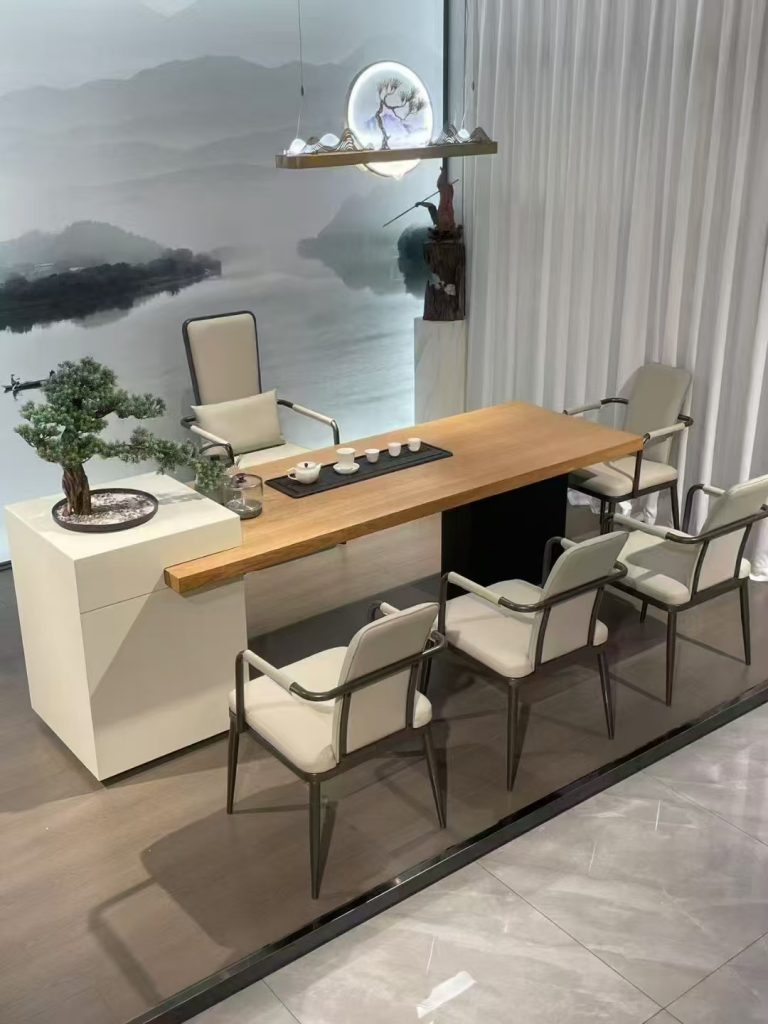In the hyper-competitive global furniture market, brands and retailers face a critical challenge: balancing cost, quality, and delivery speed. For international buyers sourcing furniture from overseas, one of the most overlooked yet transformative solutions is furniture assembly services. By outsourcing the final assembly of furniture components to specialized factories, businesses can slash logistics costs, minimize damage risks, and deliver ready-to-use products to customers—without sacrificing quality. In this guide, we explore why furniture assembly services have become a game-changer, how they work, and why Chinese factories are leading the charge in delivering these solutions.
What Are Furniture Assembly Services?
Furniture assembly services involve outsourcing the final step of furniture production: putting pre-fabricated components (e.g., frames, panels, drawers, and hardware) together into a complete, functional piece. Unlike “flat-pack” furniture that requires customers to assemble products themselves, professionally assembled furniture arrives ready to use—saving end-users time and frustration while reducing returns due to assembly errors.
For brands, this service bridges the gap between efficient overseas manufacturing and seamless customer experiences, making it a cornerstone of modern supply chain optimization.
Why Furniture Assembly Services Matter for Global Brands
The benefits of furniture assembly services extend far beyond convenience. Here’s why they’ve become indispensable for international buyers:
1. Reduced Logistics Costs and Complexity
Shipping fully assembled furniture is expensive and risky. Large, bulky items take up more container space, incurring higher freight charges, and are prone to damage during transit (e.g., scratches, dents, or loose joints). By shipping pre-fabricated components instead, brands:
– Save on shipping costs: Components are smaller, lighter, and easier to pack, reducing freight expenses by 30-50% compared to shipping assembled pieces.
– Minimize damage risks: Fragile parts (e.g., glass tabletops, delicate finishes) are protected during transit when disassembled.
2. Faster Time-to-Market
Assembling furniture locally (or near the point of sale) drastically reduces delivery times. Instead of waiting weeks for a shipment to cross oceans, brands can:
– Ship components quickly: Air or sea freight for components is faster and more flexible than waiting for large assembled items.
– Assemble locally: Partnering with a nearby factory allows for rapid final assembly, getting products on store shelves or to customers in days instead of months.
3. Improved Customer Experience
Consumers expect furniture to arrive ready to use—not in a box of parts. Professionally assembled furniture:
– Reduces returns: A 2023 survey by furniture industry research firm FURNITURE TODAY found that 28% of online furniture purchases are returned due to assembly difficulties. Pre-assembled pieces eliminate this issue.
– Enhances brand reputation: A seamless unboxing experience builds trust, encouraging repeat purchases and positive reviews.
4. Scalability for Small and Large Orders
Whether launching a small-batch custom collection or scaling up to mass retail, furniture assembly services adapt to your needs:
– Small Orders: Factories handle low-volume assemblies (e.g., 50 units for a boutique hotel) without minimum order requirements.
– Large Orders: Automated assembly lines ensure consistent quality across 10,000+ units, meeting retail giant demands.
The Furniture Assembly Process: From Components to Ready-to-Use
Professional assembly services follow a rigorous, multi-step process to ensure precision and quality. Here’s a breakdown of the key stages:
1. Component Inspection
Before assembly begins, factories inspect all pre-fabricated parts (e.g., frames, drawers, hinges) for defects:
– Material Checks: Verifying wood grain, metal thickness, or fabric color matches the design specs.
– Dimensional Accuracy: Ensuring components fit together seamlessly (e.g., drawer slides align with cabinet frames).
2. Precision Assembly
Skilled technicians use specialized tools to assemble components:
– Mechanical Assembly: Screws, dowels, or adhesives secure joints (e.g., attaching table legs to tabletops).
– Functional Testing: Simulating real-world use—e.g., opening/closing drawers, sitting on sofas—to confirm durability.
3. Finishing Touches
After assembly, factories add final details to enhance aesthetics and functionality:
– Hardware Installation: Attaching knobs, handles, or hinges.
– Surface Polishing: Buffing wood surfaces to remove scratches from assembly.
– Packaging: Wrapping assembled furniture in protective materials for safe transit to end-users.
4. Quality Control
Factories conduct final inspections to ensure compliance with client standards:
– Ergonomic Checks: Verifying chair seat heights, table stability, or sofa comfort.
– Aesthetic Validation: Confirming finish consistency, color matching, and alignment with design mockups.
Why Choose China for Furniture Assembly Services?
China has emerged as a global leader in furniture assembly services, combining technical expertise, cost efficiency, and scalability. Here’s what sets Chinese factories apart:
1. Advanced Assembly Technology
Chinese factories invest in state-of-the-art equipment to streamline assembly:
– Automated Lines: Robotic arms and conveyor systems handle repetitive tasks (e.g., screwing, inserting hardware), reducing human error and speeding up production.
– 3D Vision Systems: Cameras and sensors verify component alignment with micron-level precision, ensuring flawless assembly.
2. Skilled Workforce
While automation handles precision, human expertise remains critical. Chinese factories employ:
– Assembly Technicians: Trained in joinery, hardware installation, and functional testing—skills honed over decades of furniture production experience.
– Quality Controllers: Experts in international standards (e.g., EN 1729 for furniture safety) to ensure compliance with global buyer’ requirements.
3. Cost-Effective Solutions
China’s robust manufacturing ecosystem enables competitive pricing without compromising quality:
– Economies of Scale: Large factories assemble thousands of units monthly, spreading fixed costs (equipment, facilities) across higher volumes.
– Local Sourcing: Proximity to component suppliers (e.g., woodworking factories, hardware vendors) reduces lead times and expenses.
4. Compliance with Global Standards
Top Chinese assembly factories hold certifications that validate their processes:
– ISO 9001: Ensures consistent quality management.
– CE Marking: Confirms compliance with European safety and environmental standards.
– CARB Phase 2: Low formaldehyde emissions for wood components (critical for U.S. markets).
How to Choose a Reliable Furniture Assembly Partner in China
To maximize the success of your assembly project, select a factory with these attributes:
1. Experience with Your Product Type
Review their portfolio to assess expertise with similar furniture categories (e.g., wooden cabinets, upholstered sofas). Look for examples of complex assemblies (e.g., modular sectionals, multi-drawer dressers).
2. Quality Assurance Processes
Ask about:
– Inspection Protocols: Do they conduct pre-assembly, mid-assembly, and post-assembly checks?
– Certifications: Do they hold ISO, CE, or CARB certifications?
– Warranty Support: Do they offer repairs or replacements for defective assemblies?
3. Communication and Transparency
Choose factories with bilingual technical teams who can clarify design files, timelines, and potential challenges. Virtual factory tours or real-time production updates build trust.
4. Scalability
Ensure they can handle both small-batch custom orders and large-scale production. A reliable partner will adjust workflows to meet your unique needs without delays.
Conclusion
Furniture assembly services are no longer a luxury—they’re a strategic necessity for global brands aiming to optimize supply chains, reduce costs, and deliver exceptional customer experiences. By partnering with a skilled Chinese factory, businesses gain access to advanced technology, cost-efficient solutions, and compliance expertise, enabling them to transform pre-fabricated components into ready-to-use furniture that delights customers and drives sales.
In a world where efficiency and quality matter, Chinese furniture assembly services are the key to unlocking competitive advantage—turning logistical challenges into opportunities for growth.
Article link:https://www.vlefooena.com/manufacturer/4435/


No reply content